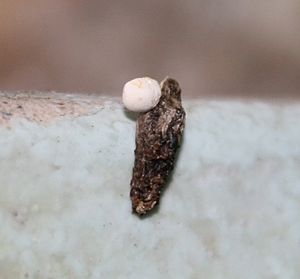Excretion facts for kids

Excretion is a basic and very important job for all living things. It's the process where bodies get rid of waste products made during metabolism (how the body uses food for energy) and other materials that aren't useful. This process is vital for all life forms. It's different from secretion, where a substance leaves a cell to do a specific job somewhere else.
In tiny single-celled organisms, like bacteria, waste simply leaves through the cell's surface. Multicellular organisms, which have many cells, use more complex ways. For example, higher plants let out gases through tiny openings called stomata on their leaves. Animals have special body parts just for getting rid of waste.
How Mammals Get Rid of Waste
In mammals, like humans, getting rid of waste happens in a few ways. One main way is making urine in the kidneys. This urine holds waste products that the body doesn't need. Another way is breathing out carbon dioxide from the lungs. This is a waste gas produced when our bodies use energy.
These waste products are removed by urination (peeing) and by breathing out. If a body can't get rid of its waste, these harmful substances build up. This can make the organism very sick and eventually kill it.
Also, food waste that the body can't use is pushed out through the anus as feces (poop). Other substances are put into a liquid called bile, which then leaves the body with the feces. Your skin and lungs also help with excretion. Your skin gets rid of wastes like urea and lactic acid when you sweat. Your lungs get rid of carbon dioxide every time you breathe out.
How Other Animals Excrete Waste
Aquatic animals, like fish, usually get rid of a waste called ammonia directly into the water. Ammonia can easily dissolve in water, and there's plenty of water to dilute it. But for land animals, there's less water around. Ammonia is also toxic (poisonous). So, land animals change ammonia into other, less harmful substances.
Reptiles and birds get rid of their nitrogen waste as uric acid. This uric acid comes out as a white paste. This way of getting rid of waste helps them save water, which is important for animals that live on land. It also makes it easier to store waste inside an egg. Both uric acid and feces leave their bodies through a single opening called the cloaca. Their waste often has two colors: a white part (uric acid) and a green or black part (food waste).
Many bird species, especially seabirds, can also get rid of extra salt. They have special salt glands in their noses. These glands make a salty liquid that leaves through their nostrils in their beak.
See also
 In Spanish: Excreción para niños
In Spanish: Excreción para niños

